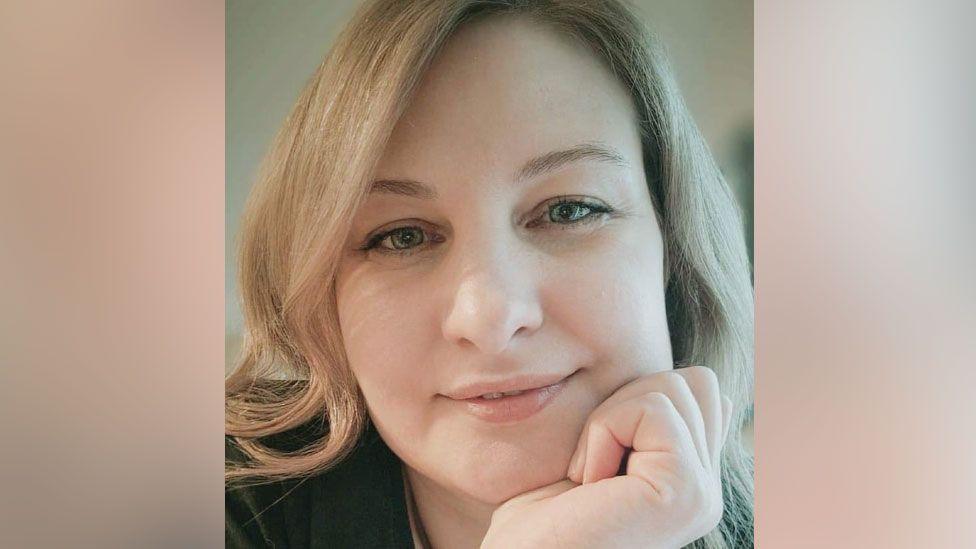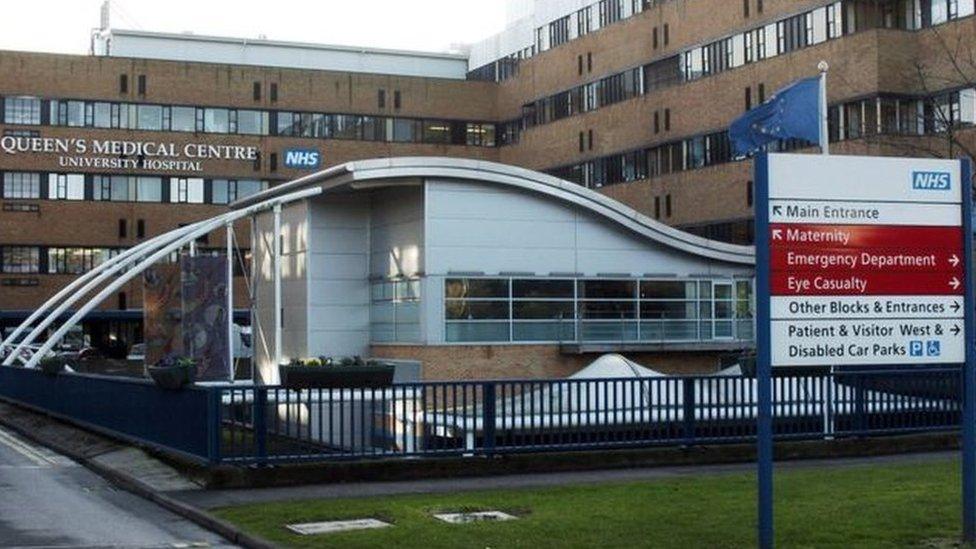Mum died of seizure after being found under coat at A&E

Inga Rublite, 39, went to the Queen's Medical Centre with symptoms that included a sudden headache, neck pain, and blurry vision
- Published
A mother of two died from a seizure days after waiting for more than eight hours in a crowded A&E waiting room, an inquest has heard.
Inga Rublite, 39, suffered "significant, irreversible" brain damage after she was found unconscious under her coat at the Queen's Medical Centre (QMC) in Nottingham on 20 January.
The inquest was told Ms Rublite died two days later from a brain aneurysm, which caused a "massive bleed" on her brain that could not be contained with surgery.
An A&E consultant at the hospital admitted there was an "opportunity missed" to check on her.
Nottingham Coroner's Court heard Ms Rublite had called 111 on 19 January with a sudden headache, neck pain, and blurry vision feeling "as though hit by a brick".
She then spoke to a clinician on the phone and was advised to go to hospital, where she arrived at about 22:30.
The inquest heard staff called out in A&E three times for Ms Rublite in the early hours of 20 January and rang her mobile phone with no answer, although her twin sister, Inese Briede - who still lives in their home country of Latvia - said there was no missed call on her phone.
Nottinghamshire coroner Elizabeth Didcock said: "There were three opportunities for the headache to be recognised as something more dangerous than it was thought to be."
At 06:50, staff registered Ms Rublite as discharged, thinking she had left of her own accord, but 10 minutes later staff found her "tucked behind a door with a coat tucked over her face, seemingly asleep", but when they looked closer she appeared to fit.
'Significant crowding'
According to Luke Derby, an emergency department matron, Ms Rublite had been sitting in the main waiting area, where it was "reasonable" that staff would have walked past, but she would "not be physically seen" by the person calling for her.
The inquest heard the waiting room was overcrowded because the emergency department's maximum capacity was exceeded that night.
Ms Didcock said: "I'm aware from the investigation report that there was significant crowding and additional numbers of people.
"I'm aware that is the background to it and has been for some time."
Robert Jamieson, an A&E consultant at the hospital, said: "The constant barrage of needing to do the next thing with the next person means that these things that seem so obvious don't happen.
"There was an opportunity missed to see how she was, how the pain was, and how she appeared, but that didn't happen.
"We have talked about lots of options and the investigation has talked about lots of options in terms of checking who's in the area and managing the space."
The inquest continues.
Follow BBC Nottingham on Facebook, external, on X, external, or on Instagram, external. Send your story ideas to eastmidsnews@bbc.co.uk, external or via WhatsApp, external on 0808 100 2210.
Related topics
- Published9 February 2024
